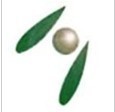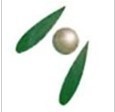
Triglycerol monolaurate
Product Details:
X
Product Description
Name: TrimethylglycineSynonyms: betaine;Methanaminium1-carboxy-N,N,N-trimethyl-, inner salt ;2-(Trimethylammonio) ethanoic acid ;(Carboxymethyl) trimethylammonium hydroxide inner salt ;Trimethylammonioacetate ;Glycine Betaine ;Trimethylglycocoll ;Abromine ;Glycylbetaine and Oxyneurine.
Molecular Structure:
Molecular Formular: C5H11NO2
Molecular Weight: 117.15
CAS NO: 107-43-7
EINECS: 203-490-6
Trimethylglycine (TMG) is also called Methanaminium1-carboxy-N,N,N-trimethyl-, inner salt ;2-(Trimethylammonio) ethanoic acid ;(Carboxymethyl) trimethylammonium hydroxide innersalt ;Trimethylammonioacetate ;GlycineBetaine ;Trimethylglycocoll ;Abromine ;Glycylbetaine and Oxyneurine.
Trimethylglycine (also commonly known as TMG), is an organic compound described by the formula (CH3)3N+CH2CO2H. Trimethylglycine was originally named betaine after its discovery in sugar beets (Beta vulgaris) in the 19th century. This small N-trimethylated amino acid exists as the zwitterion (CH3)3N+CH2CO2- at neutral pH. This substance is often called glycine betaine to distinguish it from other betaines that are widely distributed in biology. Betaine hydrochloride is merely glycine betaine with a chloride counterion and is usually the first crystallised form obtained after extraction from beets. Glycine betaine is a byproduct of the sugar industry.
TMG is related to choline (trimethylaminoethanol), with the difference that the terminal carboxylic acid group of trimethylglycine has been reduced to a hydroxyl group in choline. The product of demethylation of TMG is dimethylglycine. Alkylated derivates of trimethylglycine have uses as quaternary ammonium zwitterionic surfactants.
Betaine has three known functions in mammals. It is an organic osmolyte that accumulates in renal medullary cells and some other tissues to balance extracellular hypertonicity. Secondly, it also acts like a chaperone to stabilise protein structure under denaturing conditions. Finally, it serves as a methyl donor in the betaine homocysteine methyltransferase (BHMT) reaction which converts homocysteine to methionine.
[Actions]:
1.Amino acid drugs and widely used for feed additives. Betaine can stimulate the animal's smell and taste, which also can improve utilization when adding betaine in the fish feed. Adding betaine in fish feed, it can attract fish to ingest feed and reduce feed wastage, so it plays the biggest role of attractive way.
2.Feed containing betaine can increase animal products's freshness; it can improve the quality of animal products adjusted trace elements.
3.An efficient methyl donor.
4.In a serious shortage of choline in the diet, betaine can save methionine by making methionine not to be used as methyl donor, thereby enhancing the growth rate, but not a substitute for methionine for protein synthesis.
Enter Buying Requirement Details
Other Products in 'Starch Derivatives ' category
 |
A & Z Group Co.,Ltd
All Rights Reserved.(Terms of Use) Developed and Managed by Infocom Network Private Limited. |
 English
English Spanish
Spanish French
French German
German Italian
Italian Chinese (Simplified)
Chinese (Simplified) Japanese
Japanese Korean
Korean Arabic
Arabic Portuguese
Portuguese





 Send Inquiry
Send Inquiry